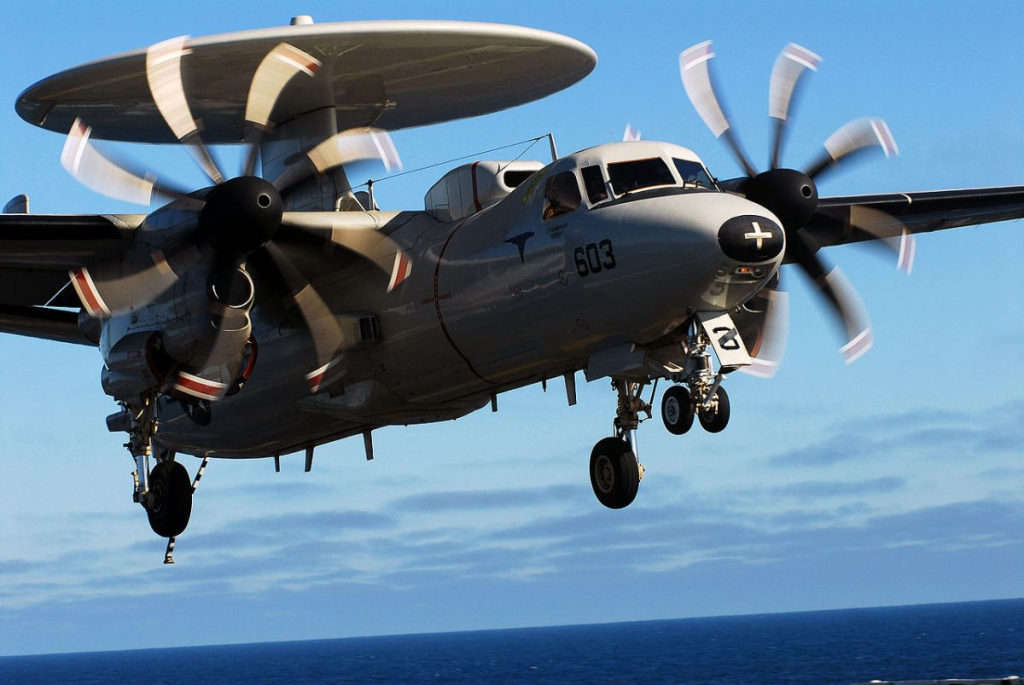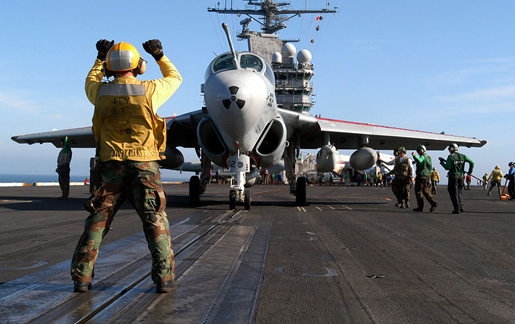Naval Flight Officer explains why the EA-6B (Prowler) had a nuclear trefoil nose art:
‘The “trefoil” helped Paddles confirm visually whether it was a Prowler or Intruder in the groove,’ Andy Burns, US Navy Surface Warfare & Flight Officer.
In 1960, as part of the development of the new A2F (later A-6) Intruder all-weather attack aircraft, Grumman engineers began evaluating an ECM version of the airplane. The result was the EA-6A Intruder, which entered service in Marine Corps squadrons in December 1965. Concurrently, Grumman developed Tactical Jamming System and defined the requirements for the airplane to serve as a platform for it. The result was the EA-6B Prowler, which built upon the success of the EA-6A, but differed in some respects including size to incorporate a four-man crew consisting of one pilot and three electronic counter-measures officers (ECMO).
The first Prowlers arrived at VAQ-129 at NAS Whidbey Island, WA, in December 1971, and the initial fleet squadrons equipped with the new airplane flew combat missions over North Vietnam as part of Operations Linebacker I and II. This began a lengthy service that lasted over four decades with the Prowler developing into the foremost electronic attack platform in the US military arsenal, supporting combat missions in Grenada, Lebanon, Libya, Iraq, Bosnia, and Afghanistan and other crises around the world.
As the main image of this post shows, the EA-6B had a very distinctive feature: “nuclear trefoil” painted on its nose.
Why did the Prowler have it?
‘It was a visual aid for the Landing Signal Officers (LSOs), aka “Paddles,” pilots who are trained to observe and grade landing passes,’ Andy Burns, US Navy Surface Warfare & Flight Officer, explains on Quora.

‘‘One of Paddles’ functions is to safety-check that the aircraft actually “in the groove” (on final approach) is the same type that the ship thinks it is. The type and fuel on board determine the weight settings for the arresting gear. The Prowler was developed from the A-6 Intruder and they appeared similar from a nose-on perspective, especially from a distance, but the EA-6B was much larger and heavier than the A-6 and thus needed a different weight setting.

‘The “trefoil” helped Paddles confirm visually whether it was a Prowler or Intruder in the groove.
‘Other aircraft used similar markings for the same reason, like different versions of the E-2 Hawkeye.


‘Once the A-6s were retired in the mid-90s there was no need for the marking on the EA-6s any more, and most squadrons discontinued using it (as you can see in the pic below). But some continued to just out of tradition.’

Burns concludes:
‘If you’re asking why the “nuke” symbol in particular was used: the Prowler’s mission was electronic attack, i.e., jamming radar and radios. You do that by pumping out a lot of electronic energy, which is after all just another form of radiation.’
Source: The Aviation Geek Club


Leave a comment